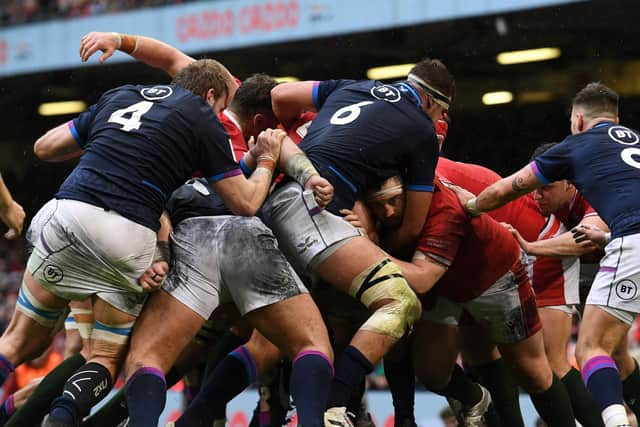Brain injuries put rugby in the dock - Daniel McGinn
Among the latest to bring proceedings are ex-Glasgow Warriors players Keiran Low and John Shaw, who have joined the ongoing action against World Rugby, and now also against the Scottish Rugby Union (SRU).
But it is the case of sadly deceased Scotland international, Siobhan Cattigan, that has raised questions over whether the SRU’s current measures are doing enough for player welfare.
Advertisement
Hide AdAdvertisement
Hide AdSiobhan played for Scotland Ladies between 2018 and 2021. She tragically died in November 2021 at the age of 26. It is alleged she sustained brain injuries from playing rugby, which caused a deterioration in her health and ultimately led to her death.


Under Scots law, Siobhan’s direct family are potentially entitled to seek compensation for the loss of a loved one, referred to generally as loss of society, and the executors of her estate, for pain and suffering she experienced prior to passing away, referred to as transmissible solatium.
Her family’s case against the SRU and World Rugby is on a similar basis to the claims brought by Shaw and Low. It will also be argued that there was a failure to follow protocols in place to deal with head injuries and after care. A key difference in Siobhan’s case is that, in the modern game, there are more clearly established protocols that ought to be followed during play and in assessing return to play following a head injury.
Anyone interested in rugby over the last few years will have seen changes brought in to address player safety. The cases of former players, such as Shaw, who played before the introduction of much of these changes, will argue that the governing bodies ought to have put measures in place because they knew or ought to have known of the risks to players at that time.


That is, in my view, a harder argument than what must be made by the Cattigan family and any recent cases, given that the risk of head injury is now so well-known and strict protocols are to be followed. If it can be shown that these protocols were not followed and the opinion of medical experts is that, had they been followed, her injuries would have been avoided, then a case can succeed.
My personal view on such cases is perhaps influenced more by my personal injury background than my (extremely amateur) rugby background. There is no question in my mind that if it can indeed be established that the governing bodies didn’t do enough, and the players have sustained injury as a result, then they are entitled to compensation. Compensation must reflect the extent of their injuries and the impact on their lives, which is extreme in some cases.
Proving that will not be straightforward, but the questions being asked are ones that must be raised. The issues Low, Shaw and their cohort are experiencing are tragic. Those players are entitled to know if more could have been done. Siobhan Cattigan’s case shows that this is not just an issue of the past.
It is argued that further changes will hamper the game, but what will happen to rugby if these cases keep occurring?
Advertisement
Hide AdAdvertisement
Hide AdThose reluctant to apportion blame to governing bodies because rugby is “always going to be a dangerous game” must look at examples outside of rugby, and even sport.
In what other professions would such risk be acceptable? How much safer is construction work, and other seemingly inherently dangerous jobs, following the introduction of strict Health and Safety regulations in recent decades? These changes were brought about, at least in part, because individuals brought actions and proved that their employers could and should be doing more to protect them. Legislation followed to set the standards.
Governing bodies have the power to put in place real change now. If such actions achieve no more than that; they will have been justified.
Daniel McGinn is a Senior Solicitor in Thorntons specialist Personal Injury team. For further information click here
Comments
Want to join the conversation? Please or to comment on this article.
